Piece by jagged piece, the wreckage of the Francis Scott Key Bridge is gradually rising from the murky waters of Maryland's Patapsco River in a complex, multi-faceted salvage operation aimed at clearing the key navigational channel by the end of May.
Col. Estee Pinchasin, Commander of the U.S. Army Corps of Engineers’ Baltimore District, and part of the multi-agency unified command overseeing the effort, explains that each lift is the product of extensive planning and engineering.
With the bow of the 985-ft-long cargo vessel M/V Dali still grounded under the weight of a 5,000-ton section of the nearly 50-year-old through-truss structure it collided with in Baltimore on March 26, salvors operating from an armada of waterborne assets, ranging from tugboats to a Chesapeake 1000 floating crane, are performing an intricate operation to cut, rig and lift sections of mangled wreckage from the bottom of the riverbed. The salvage firms include Donjon Marine Co., Inc., Resolve Marine and Skanska.
Even with the availability of high-resolution side-scan sonar imagery, salvors rely on hands-on assessments from divers who themselves must be vigilant for hazards in an environment where visibility is usually little more than one foot. “Understanding if those members are in compression or tension is really critical to how the wreckage will be cut free and lifted,” Col. Pinchasin told ENR during a recent tour of the collapse site. Unless properly planned and executed, she added, cutting a segment could spark a reaction that might put cranes and operators at risk.
“With every lift that takes place, there are lessons that are being learned, and surveys to see if and how the ship is moving, if the wreckage is moving, and how it’s reacting,” she says.
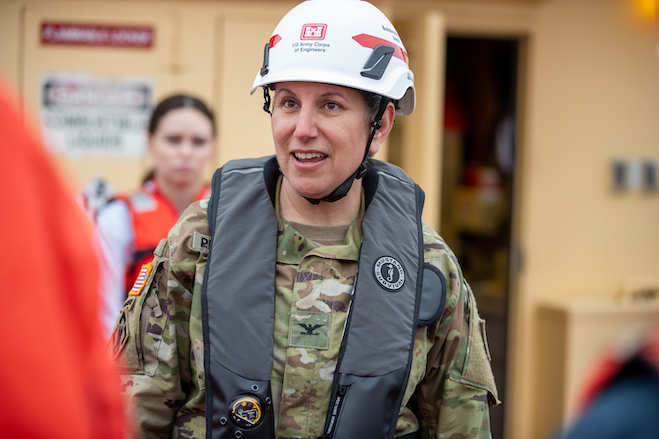 Col. Estee Pinchasin, U.S. Army Corps of Engineers Baltimore district commander, spoke to reporters during a tour of the Francis Scott Key bridge collapse site April 18, 2024.
Col. Estee Pinchasin, U.S. Army Corps of Engineers Baltimore district commander, spoke to reporters during a tour of the Francis Scott Key bridge collapse site April 18, 2024.Photo by Bruce Buckey for ENR
As sections are lifted, they are barged 1.5 nautical miles to a waterside industrial and logistics center where the components are processed and cut for eventual recycling. Lifts totaling 1,300 tons in the first three weeks of the response have marked progress toward unified command’s initial goal of establishing a 35-ft-deep, 280-ft-wide limited-access channel within the existing federal deep-draft navigation channel by the end of April.
The passage will partially restore access to the Port of Baltimore by providing a one-way traffic corridor for barge container service and some roll on/roll off vessels, which Col. Pinchasin says accounts for approximately three-quarters of the port’s traffic.
Updated Removal Plan for Grounded Ship
A strategy for freeing and removing the Dali—which has been a goal from the outset of the response effort—has proven to be more complicated than expected.
“Initially we thought we would cut off that portion that was sitting on top of the vessel and lower it to the floor of the riverbed,” Col. Pinchasin says. “But we realized that it wouldn’t be safe and had too much uncertainty.”
The plan now calls for removing dozens of the Dali’s 4,700 containers from the vessel’s bow to make way for constructing a staging area from which large truss sections will be cut in sequence along with a delicate vessel refloating process. This will allow the Dali to be towed back to the Port of Baltimore and the remainder of the bridge debris to be removed.
Though no overall cost for the operation has been announced, Col. Pinchasin says the effort has so far tracked with the salvors’ initial estimates. She also credits the unified command structure for the remarkable progress made since the collision, enabling the agencies to share expertise and information and to craft “a very well thought-out plan that is continually refined and improved by the best salvage experts that we have in our country.”
Overshadowing the effort, Col. Pinchasin says, is the knowledge that two workers who were part of an eight-person crew performing concrete repairs on the main span when the collision occurred remain missing. A protocol for halting work in certain areas has twice been used to recover victim remains.
“It’s something we’ve planned for,” she says. “The human factor is key across everyone [in the effort]."
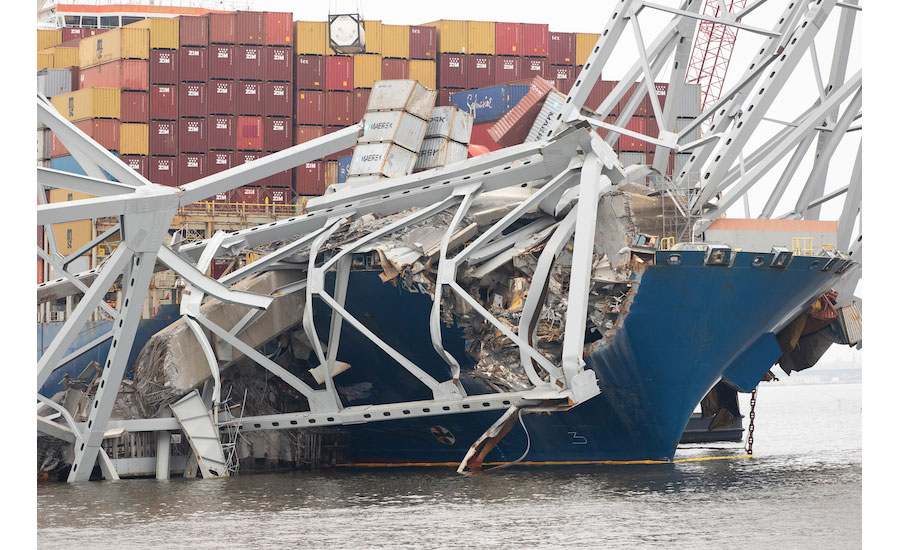

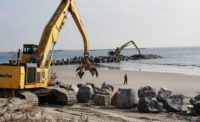
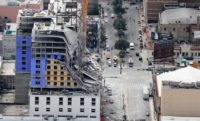
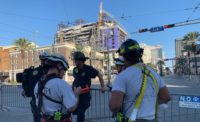
Post a comment to this article
Report Abusive Comment